Are you overwhelmed by the sheer volume of online reviews and struggling to make sense of them all? Do you find yourself losing sleep over the ever-growing challenge of maintaining your company’s reputation while juggling countless other responsibilities?
If so, you’re not alone. In today’s fast-paced digital world, it’s more important than ever to stay on top of customer reviews. That’s where review management software comes into play. But with a myriad of options available, how do you choose the one that’s right for your business?
In this blog post, we’ll explore the key factors you need to consider, share insider tips, and provide you with a roadmap to finding the ideal review management software for your unique needs.
Say goodbye to endless hours of sifting through reviews, and hello to a streamlined, efficient, and effective review management process. Let’s dive in!
1. First, identify your business requirements
Before diving into specific features and pricing, it’s crucial to assess your business’s unique needs in order to select the ideal review management software.
By considering the following factors, you can determine your requirements and make an informed choice.
Business size — one size doesn’t fit all
The size of your business significantly influences the complexity of your review management needs.
For instance, a small local bakery with just one location will require a different solution compared to a large retail chain operating multiple stores nationwide.
It’s essential to consider the scale at which you need to manage reviews and whether the software can accommodate your current size and future growth.
Industry — catering to unique challenges
Each industry faces distinct review management challenges and review portals that are more relevant than others.
For example, a restaurant might prioritise Yelp and Google. In contrast, a hotel would likely focus on Google, TripAdvisor and Booking.com.
Make sure the software you choose caters to your specific industry and encompasses the platforms most relevant to your business.
See if the software was built with certain industries in mind, or if the company has a lot of experience in a particular industry.
This could mean that they are more knowledgeable about what you require from review management software, and may even build new features with this experience in mind.
Review management goals — a clear vision for success
Pinpoint the primary objectives you want to achieve with review management software.
Are you looking to improve customer satisfaction by digging into your online reviews? Do you want to collect more positive reviews to build your online presence? Or maybe you just want to automate parts of your review management so you can free up resources.
By understanding your goals, you can prioritise features and select a solution that aligns with your objectives, providing a clear roadmap towards success.
Your current review management process — what’s not working?
Take a critical look at your existing review management process to pinpoint areas in need of improvement or optimisation.
Are you spending countless hours manually monitoring multiple review platforms, or is there a rudimentary software solution in place that falls short of your expectations?
Gaining a clear understanding of your current approach and its shortcomings will assist you in discovering a more streamlined and impactful solution.
By thoroughly examining your business size, industry, review management objectives, and present process, you’ll be well-prepared to discern the features and functionalities necessary for a review management software that suits your needs.
This insight will steer your decision-making process, ensuring you select a platform that not only satisfies your specific requirements but also propels you towards achieving your desired outcomes.
2. Key features to look for in review management software
As you sift through various software options, take notice of the features they offer and how they will impact your review management process.
At the very least, your future review management software should include the following features.
Automated review invitations
Look out for a platform that doesn’t just help you manage your reviews, but will also help you generate more. After all, 93% of consumers read online reviews before making a purchase, so the more you have, the better.
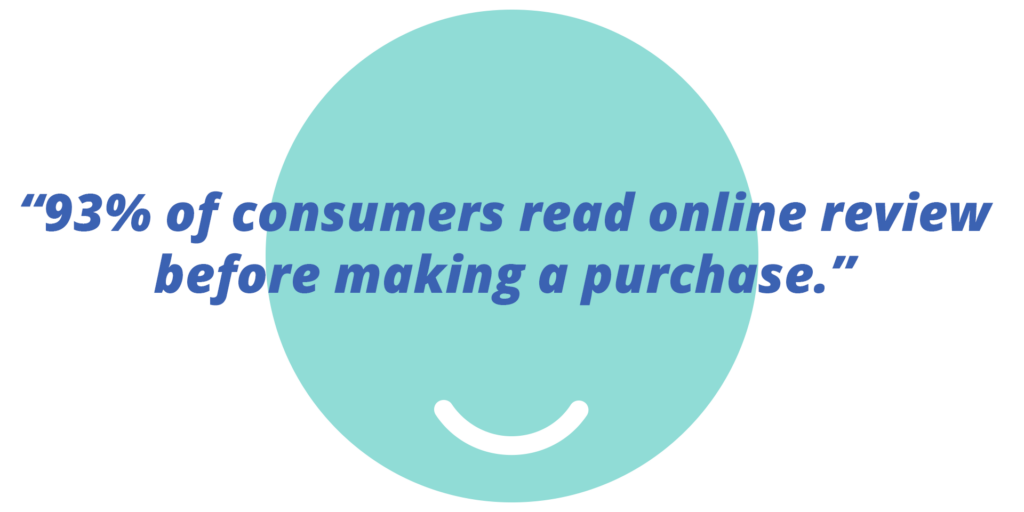
Automatic review invitations sent via different channels are a great way to reach your customers with little manual work required from you.
Some platforms, like Customer Alliance, also allow you to distribute those reviews to the review sites where you want to build a stronger reputation.
For example, say you work at a hotel and notice that a competitor has overtaken you in the TripAdvisor rankings. You could set up the platform to automatically send more invitations to TripAdvisor until you regain your position.
Consolidation of reviews from multiple platforms
Opt for software that gathers feedback from a wide range of sources, simplifying your task of managing and keeping track of online reviews.
For example, rather than checking review sites individually, you could log on to a single dashboard that displays all your reviews in one place. This helps make your day-to-day work easier and also saves you a lot of time.
Automated review monitoring and notifications
Stay informed with real-time alerts as soon as new reviews appear, allowing you to promptly address any concerns and maintain a positive online reputation. This can not only help you prevent negative feedback but also work wonders for your customer relationships.
Streamlined review response management and templates
Save precious time and ensure a consistent brand voice with pre-written response templates tailored for frequent review scenarios. This way, you can quickly and effectively respond to both negative and positive reviews.
Some platforms even have AI tools, like Customer Alliance’s AI Reply Assistant, to generate personalised review responses for you.
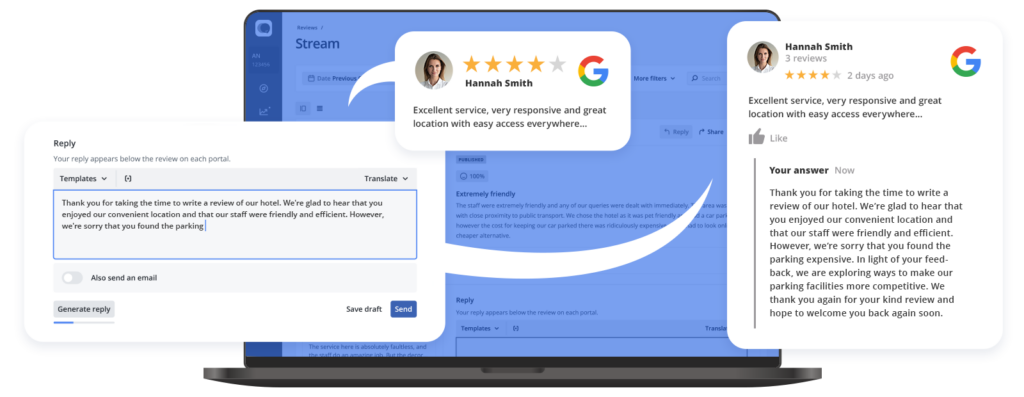
Why is this important? A study by Harvard Business Review found that hotels that replied to their TripAdvisor reviews increased their rating by an average of 0.12 stars.
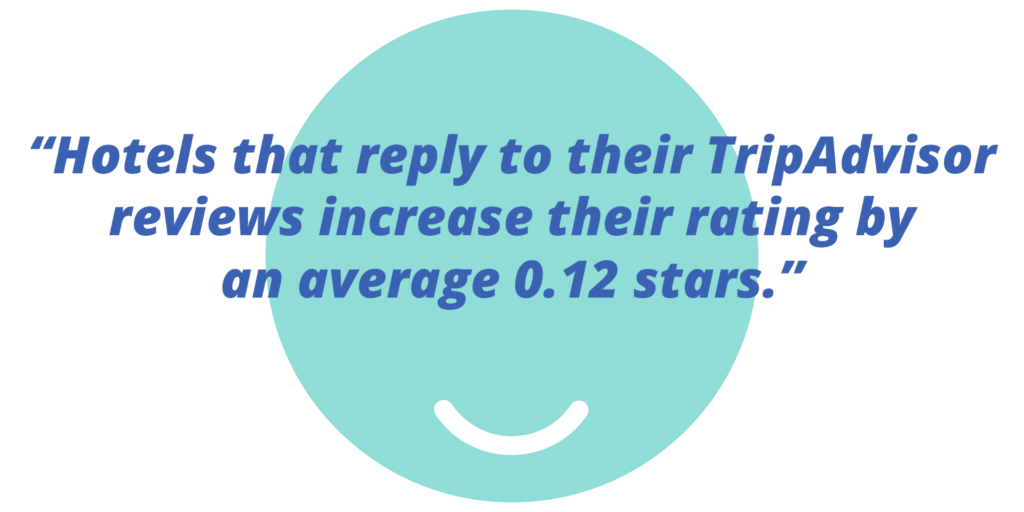
Sentiment analysis and data-driven review insights
Harness the power of intelligent insights to spot trends and pinpoint areas needing improvement. For instance, if negative reviews consistently mention slow service during breakfast at your hotel, you can proactively address the issue and enhance guest satisfaction.
Look out for text analytics or sentiment analysis features that instantly extract the topics and themes behind your online reviews.
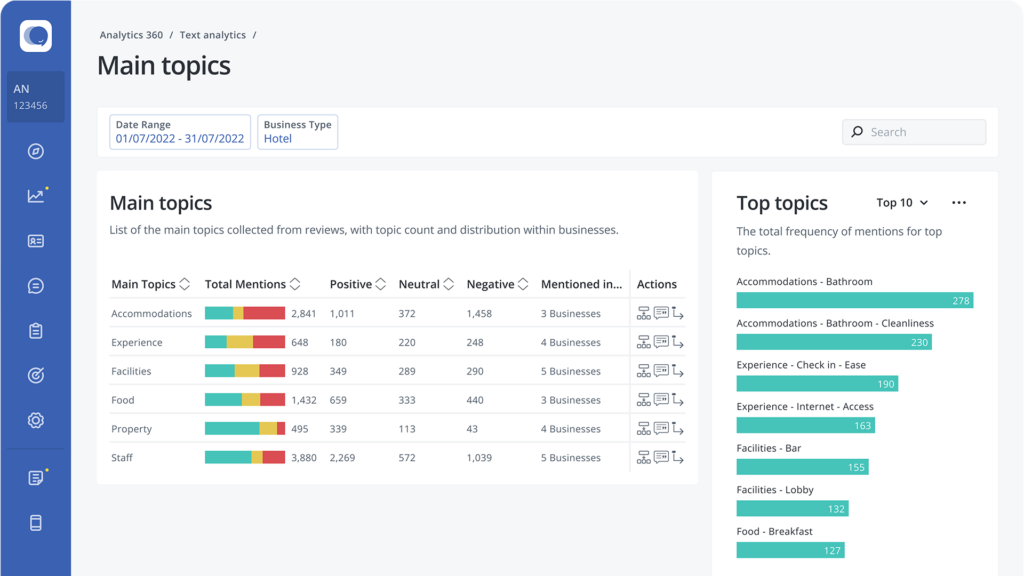
Seamless integration with existing business tools
Make sure your chosen software effortlessly connects with your current CRM, marketing, or customer support systems, creating a unified and efficient workflow.
See if the platform also offers a way to share your reviews on your website, for example through a widget. This helps you increase your brand visibility, customer trust, and, ultimately, sales.
According to a study by the Spiegel Research Center, displaying reviews can increase conversion rates by 270%.
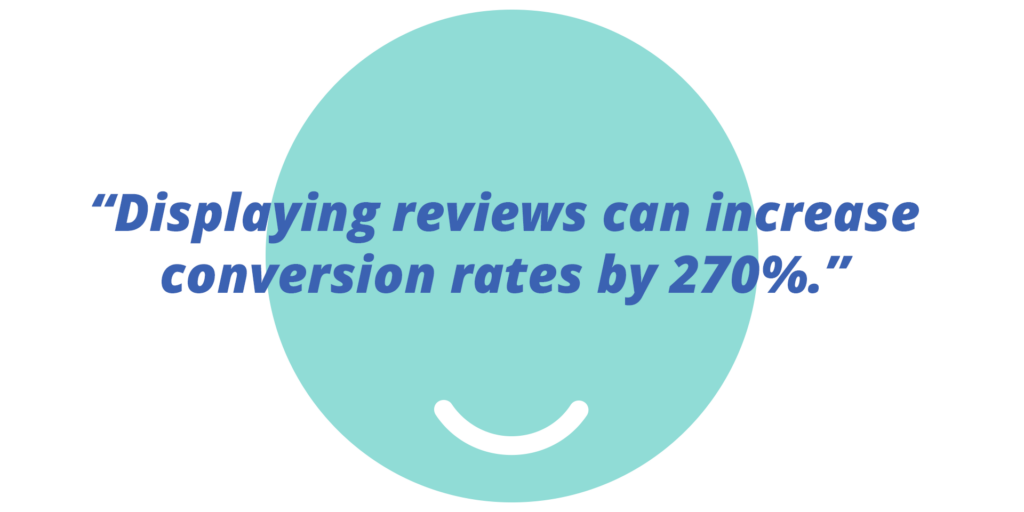
Customisation and scalability for evolving needs
Seek a solution that can adapt to your growing business and cater to your unique requirements, ensuring that it remains a valuable asset as your company expands and evolves.
By focusing on these essential features, you’ll be well-equipped to choose a review management software that not only meets your needs but also empowers you to elevate your customer experience and online reputation.
3. Evaluate the usability and user experience
Opt for review management software that offers a user-friendly interface and seamless navigation. This will have a big impact on how easy it is to train others on the software and make your day-to-day experience with the software more enjoyable.
Here are a few other things to consider.
Comprehensive onboarding and training
Choose a provider that offers a thorough onboarding process, complete with training materials and resources, to help you and your team become proficient with the software in no time. For instance, look for step-by-step video tutorials or interactive webinars that cover essential features and functions.
Responsive customer support
Opt for a provider that boasts a reliable and efficient customer support team, ready to assist you with any questions or issues you may encounter. Whether it’s through live chat, email, or phone support, make sure they’re available to address your concerns promptly and effectively.
Availability of help documentation and FAQs
Seek a provider that offers a comprehensive knowledge base filled with helpful articles, guides, and frequently asked questions (FAQs) so you can easily find answers to common questions or troubleshoot minor issues on your own.
Regular updates and improvements
Choose a software that’s continually evolving, with a provider that actively listens to user feedback and rolls out regular updates to enhance the platform’s features and overall user experience.
4. Compare pricing and plans for review management software
As you explore the world of review management software, you’ll find providers offering a wide range of pricing structures and plans. To make the best decision for your business, consider the following tips.
Assess the features included in each tier
Each plan offers a different set of features, designed to cater to businesses of varying sizes and needs. Carefully evaluate which features are most relevant to your specific requirements, and select a plan that offers the right balance between functionality and affordability.
Watch out for hidden costs
Some providers may include additional fees that aren’t immediately apparent, such as setup fees, data overages, or premium support charges. Make sure to read the fine print and inquire about any potential hidden costs to avoid unpleasant surprises down the road.
Take advantage of free trials or demos
Most review management software providers offer free trials or demos, allowing you to test the platform’s features and usability before committing to a plan.
Use this opportunity to get a feel for the software, ensuring it meets your needs and is easy to navigate. For instance, try responding to a few sample reviews or analysing the provided insights during the trial period to gauge the platform’s effectiveness.
Compare the value of different plans
As you weigh the pros and cons of various pricing plans, focus on the long-term value each plan offers. Consider factors like potential time savings, improved customer satisfaction, and the impact on your online reputation.
Sometimes, investing in a slightly more expensive plan with advanced features can yield significant returns in the long run.
Consult with your team
If multiple team members will be using the software, gather their input and feedback on the available plans and features. Their insights can be invaluable in determining which plan best suits your business’s unique needs.
5. Check customer reviews and testimonials
Uncovering the real-world experiences of others using review management software can be incredibly insightful.
By checking customer reviews and testimonials, you’ll gain a better understanding of the software’s performance, reliability, and effectiveness.
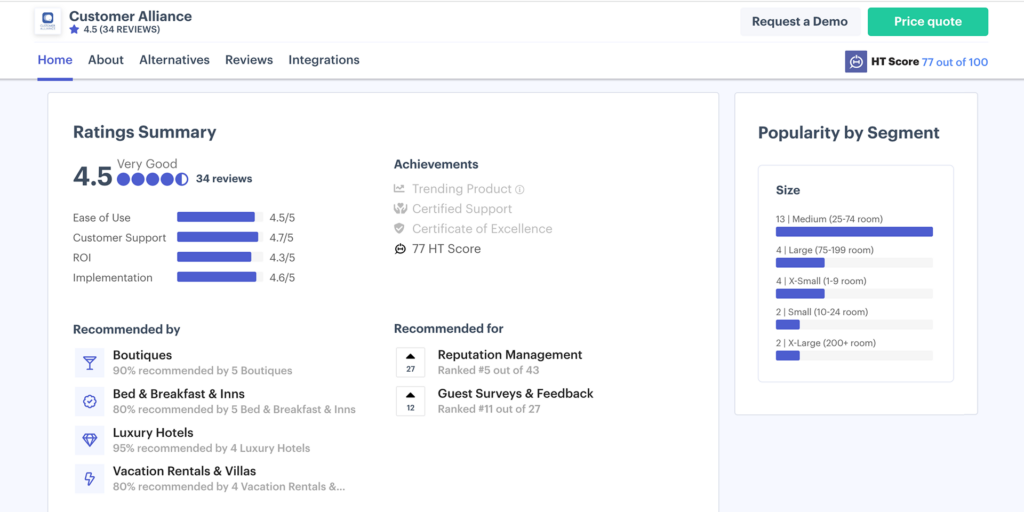
To ensure you’re getting the most accurate information, follow these steps:
Seek out feedback from similar businesses
Focus on reviews from businesses that closely resemble your own in terms of size, industry, and goals. This will give you a clearer idea of how the software might perform in your specific context.
Identify recurring praises or complaints
Pay close attention to common trends in the feedback. Are users consistently praising the software’s ease of use, or are they frequently complaining about slow customer support? These recurring themes can help you identify potential strengths and weaknesses of the software.
Explore various sources for reviews
Don’t limit yourself to a single source of information. Trusted websites for software comparisons, industry forums, and social media platforms like LinkedIn can all provide valuable insights into the experiences of other users. By gathering feedback from multiple sources, you’ll get a more comprehensive view of the software’s performance.
Consider the bigger picture
While it’s important to take individual reviews into account, don’t forget to step back and consider the overall impression you’re getting from the feedback. Are the majority of users satisfied with the software, or do the complaints outweigh the praises?
6. The moment of truth — making your final decision on review management software
The journey has been long, but you’re finally ready to make a well-informed decision on the perfect review management software for your business.
To ensure you select the platform that will deliver the most value to your organisation, follow these practical steps.
Create your shortlist
Compile a list of potential review management software options that meet your criteria based on your research. This focused selection should consist of platforms that align with your unique needs, goals, and budget.
Assess long-term value
Look beyond the immediate benefits and consider each platform’s potential to support your business’s growth and evolving needs.
Will the software be able to accommodate changes in your industry or customer behavior? Can it scale up as your business expands? These are essential factors in determining the platform’s long-term value.
Balance budget and functionality
It’s crucial to find a review management software that offers the features you need at a price you can afford.
While it might be tempting to opt for the lowest-cost option, remember that skimping on essential features could prove costly in the long run. Instead, seek a solution that strikes the right balance between affordability and functionality.
Visualise the implementation
Imagine how the software will integrate into your existing workflows and systems. Will it be easy to train your team on the new platform, or will there be a steep learning curve?
Consider the onboarding support provided by the software provider and the resources available to ensure a smooth transition.
Trust your instincts
After conducting thorough research and considering all the factors, trust your gut feeling. You know your business better than anyone else, and your instincts can often guide you towards the right choice.
Conclusion
In conclusion, choosing the perfect review management software doesn’t have to be a daunting task.
By taking the time to evaluate your unique business needs, keeping an eye on essential features, and thoroughly researching potential options, you can make an informed decision that will transform the way you manage customer reviews.
Investing in the right review management software will not only save you countless hours of manual work, but it will also help improve your online reputation, enhance customer satisfaction, and ultimately, boost your bottom line.
As you implement your chosen solution and see its positive impact, you’ll breathe a sigh of relief, knowing that you’ve made a smart decision that propels your business forward.
So, embrace the journey, and watch your business flourish as you harness the power of customer reviews like never before!
FAQs about how to choose review management software
How do different review management software solutions handle data security and user privacy, especially in light of various international data protection regulations?
When considering data security and user privacy for review management software, it’s important to look for solutions that comply with international data protection regulations such as GDPR. Ensure the software provider has robust security measures in place to protect your customers’ data.
Can review management software be customised to filter out spam or irrelevant reviews automatically, ensuring only genuine feedback is processed and analysed?
Systems in place for review verification is a key feature to look for in review management software. This functionality ensures that the feedback you analyse and respond to is genuine, enhancing the quality of your insights and actions.
What are the long-term benefits of using review management software in terms of brand loyalty and customer retention, beyond just managing online reviews?
The long-term benefits of using review management software include improved brand loyalty and customer retention. By efficiently managing and responding to reviews, you demonstrate your commitment to customer satisfaction, encouraging repeat business and attracting new customers through positive online reputation.
